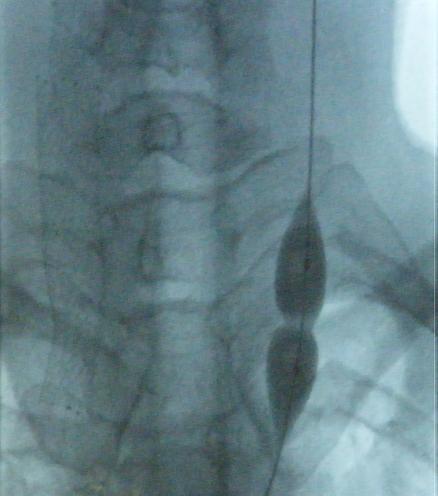Paolo’s wife had multiple sclerosis (MS). The cause of MS is unknown although we do know the immune system attacks the fatty covering of nerves, resulting in inefficient nerve signaling. For some the changes are just enough to be noticed, a slight limp in their walk; for others, it can mean being wheelchair bound. It is a chronic, relentless disease, at times slow, at other times resulting in dramatic losses of neurologic function. It is hard to watch and hard to live. I suspect that Paolo knew both sides, watching and living. He understood, in that deeper way, that patient’s with MS need a cure but sometimes settle for hope.
In 2009, Paolo Zamboni, an Italian researcher, offered hope in his finding an association between MS and compromised drainage of blood, from the brain. The responsible veins were malformed, creating what he termed chronic cerebrospinal venous insufficiency (CCSVI). In a small trial, he corrected the malformation of these veins using a balloon, with only a needle puncture. The technique is identical to that used by physicians every day to open coronary arteries. And some patients got better. Of course, it is hard to really tell better in a disease that comes and goes, like MS. But it did offer hope for many in the MS community. I know that because as a vascular surgeon I got calls from patients asking to have the procedure, a percutaneous venous angioplasty.
It is difficult to say no to hope, especially when the patient is sitting across from you. It is difficult to say no to hope when cure is impossible and symptoms relief is evanescent. With the help and urging of patient advocacy groups governments in Italy, Canada and the United States funded studies and centers. Patients traveled to Italy or Canada for care.
There were always concerns. There wasn’t a very plausible biologic process. Independent replication proved elusive. Biomarkers of MS were not found in those with CCSVI. But the patient interest and concern, along with funding allowed for further testing and hope. Let me cut to the chase, in a randomized, double-blind sham-controlled clinical study there was no clinical benefit. None. Those results were just published in JAMA Neurology. That is important to all of those concerned about MS, but there is a more significant lesson for all of us.
In the current world of science, where retractions are murmured or muttered and not said aloud Paolo Zamboni said, "The procedure cannot be recommended for treatment of patients with MS. No further double-blinded clinical studies are needed." He stood up and was counted.
In the editorial that accompanied the report, the authors point out that “procedures are sometimes elevated over medicinal therapy because of their allegedly curative capacity.” More importantly, they note that devices are more readily approved, for a variety of reasons – reasons we need to begin to address in earnest.
Reasons like whether devices and procedures should be subject to randomized clinical trials, despite their cost in dollars and time. Or how we should treat off-label uses? The balloons used for CCSVI are the same already approved for treating arteries and veins for other reasons. And before we rush to say no, only for approved uses, note that a recent meta-analysis indicated that medicines are often as efficacious for their off-label purposes than those for which they gained FDA approval.
They conclude their editorial in this way
“Zamboni et al should be applauded for their clear-eyed evaluation of their earlier theory. In a rigourous and definitive fashion. It is difficult to refute one’s own prior findings, but the authors have used the right methods to test the CCSVI theory and have yielded an unequivocal result.”
While this is a setback for MS patients, it is a triumph for medical science. Thank you, Dr. Zamboni, for demonstrating the actions of a real physician-scientist. We should all take a moment to reflect on science’s beauty and power to inform us, to improve our lives when not constrained by ego, status, publish or perish, or the new media landscape.




